Company Says 2011 "Sounds Like A Good Number"
An eager crowd at AeroShell Square Wednesday afternoon braved
warm temperatures and somewhat brisk breezes to watch Cirrus's
much-anticipated Vision SJ50 -- the aircraft formerly known as "The
Jet" -- make its public debut at AirVenture 2008.
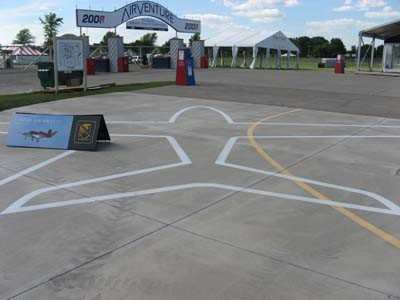
When the jet flew by show center, most were amazed at the noise
this aircraft produces... or rather, the lack of it. The sleekness
of the design as it flew by was "awesome," as one spectator put it,
and those assembled gathered around the new plane once it taxied
in, and shut down.
Following the introduction of Cirrus Design co-founders Dale and
Alan Klapmeier by EAA president Tom Poberezny, the Brothers
Klapmeier spoke about what they think the Vision SJ50 will mean to
general aviation, and the challenges that lay ahead.
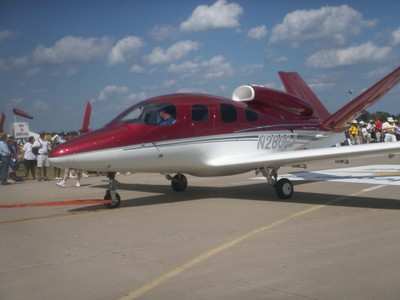
"As a personal jet, our goal is to is to have an airplane that
we can fly, that you can fly, that gives you more performance but
still is closer to the personal aircraft that we are used to
flying," Alan said. "We are not trying to build a business jet, we
are not trying to build a VLJ."
After thanking a few key individuals, Dale discussed the history of
Cirrus and the challenges they face. While speaking of changes that
the industry has seen over the years, Dale said, "The common thread
that runs through that is the continued introduction of new
technology. The airplane that you see behind is a result of that
new technology. What hasn't changed along the way is really the
enthusiasm of the company."
Dale Klapmeier then announced the first Cirrus Vision fleet
order -- air taxi provider SATSAir, which ordered five SJ50s to
complement its existing fleet of Cirrus SR22s. Cirrus purchased
SATSAir in 2005.
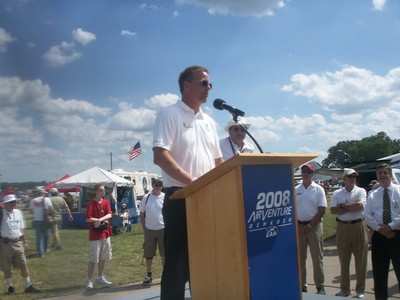
Following that announcement, Aero-News sat down with Mike
VanStaagen, Vice President of the Advanced Design Group at Cirrus,
and asked him to field some questions that will affect every
potential SJ50 buyer. Although VanStaagen would not comment on the
aircraft's fuel efficiency or performance, he did say Cirrus is
about where they expected to be at this early flight test stage...
and that the company expects any figures that may be running high
at this point to fall in line.
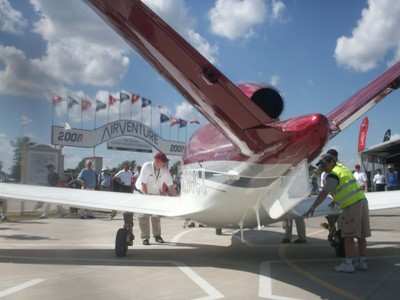
As far as transition training goes, Mike stated Cirrus is
working on training development as we speak. In terms of the
avionics package and how that would affect training -- especially
for those current Cirrus owners who are considering the L3
SmartDeck glass panel now flying in the SJ50, in lieu of their
current Garmin or Avidyne -- Mike stated "we have to have develop a
training program that is flexible enough to except multiple
avionics displays and installations, because we don't see a world
with just one avionics manufacturer, we see world with manufactures
competing very aggressively to give our customers the best product
out there."
When asked if customer deliveries of the SJ50 are still set for
2010, Mike replied "we don't want to be overly pessimistic, or
overly optimistic, so we are now looking at 2011, that sounds like
a really good number." He also said Cirrus is taking a more
sophisticated approach to parachute testing than it did on the
SR22, by relying a lot more on simulations, in lieu of real-time
tests.
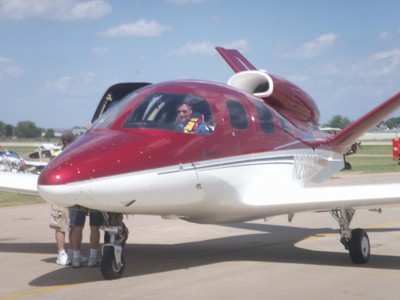
"Whether or not an actual parachute test will be completed is
yet to be determined," VanStaagen added.
The SJ50 is currently on display at the Cirrus booth, near the
Main Entrance to AirVenture.
 NTSB Final Report: Cozy Cub
NTSB Final Report: Cozy Cub ANN FAQ: Contributing To Aero-TV
ANN FAQ: Contributing To Aero-TV Classic Aero-TV: Seated On The Edge Of Forever -- A PPC's Bird's Eye View
Classic Aero-TV: Seated On The Edge Of Forever -- A PPC's Bird's Eye View ANN's Daily Aero-Linx (04.29.25)
ANN's Daily Aero-Linx (04.29.25) ANN's Daily Aero-Term (04.29.25): Execute Missed Approach
ANN's Daily Aero-Term (04.29.25): Execute Missed Approach







